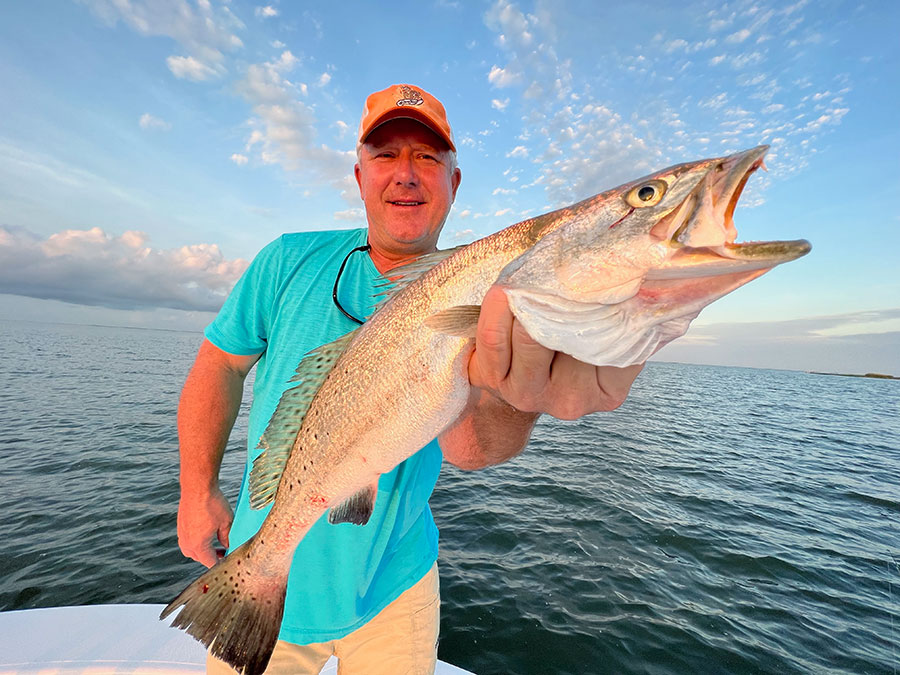
You could make a strong argument that one of the most fun ways to catch speckled trout is on hard-plastic lures, and that’s exactly what Hopedale guide Capt. Charlie Thomason loves to do this time of year.
Some of his favorite baits are MirrOlure’s MirrOdine XL, Catch 5, Catch 2000 and Paul Brown’s Soft Dine as well as Fat Boy Corky.
These hard-plastic baits work particularly great this time of year because of the forage that speckled trout are feeding on this month.
“The shrimp haven’t really started coming in yet, and the brown shrimp are not big enough to really be a substantial food source for them,” Thomason said. “The only true food source that’s out that time of year are fin fish — mullet, pogie and in some areas cocahoe minnows.
Additionally, the speckled trout that are in the marsh this time of year are bigger, and that pairs well with these larger hard-plastic lures.
“Most of the speckled trout you’re going to catch in March are going to be your larger ones because those are the ones that are around hanging out,” Thomason said. “The smaller trout don’t really start ganging up or coming in. They’re all out on the edge of the Gulf right now. Those bigger fish are going to start making their transition to be ready for spawning.”
Oysters are the key
When looking for areas to throw these baits, Thomason likes to look for shallow flats with shells on the bottom.
“Oysters are the key,” he said. “Oysters that are close to deeper water, meaning flats that are adjacent to deeper bayous or passes so those fish can drop down in there when we get cold weather.”
The oysters provide a couple elements that make them attractive to speckled trout.
“Oysters clean the water,” Thomason said. “Also, the oysters retain the heat more, so they’ll be warmer.
“It’s just like walking from grass to cement. In the summer, you can walk on grass all you want, but you go to walk on the pavement, and you can’t even stand it.”
Thomason said how you work the hard plastic is extremely important, and it’s vital to not work the baits too quickly.
“You do a lot more twitching and waiting for the bait to fall slowly than you are retrieving the bait,” he said. “Maybe a pause of 2-3 seconds depending on how deep the water is.
“When it’s falling, that’s the actual movement that makes the fish strike; it’s not the twitch. It’s going to be after the twitch.”


